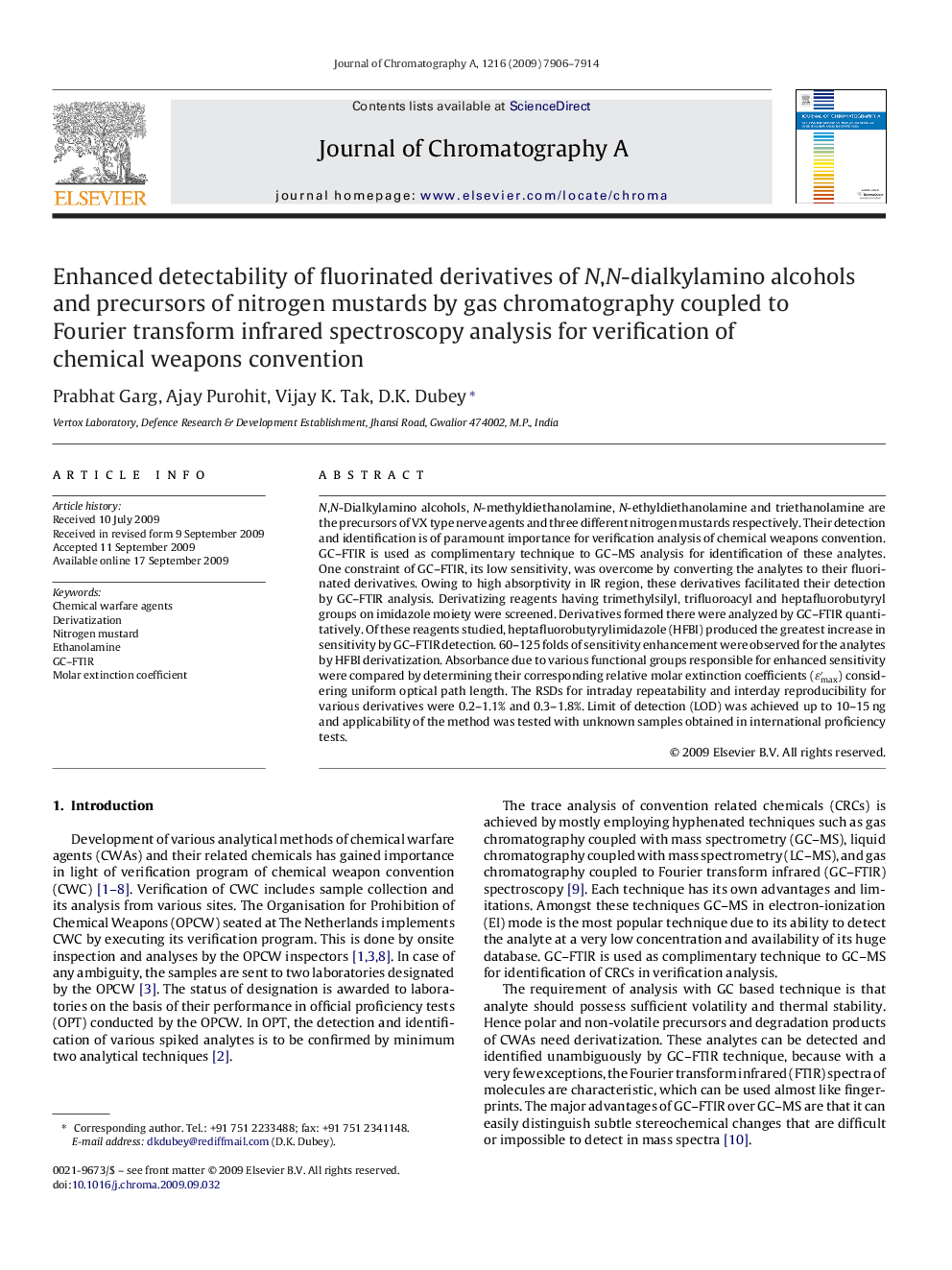| Article ID | Journal | Published Year | Pages | File Type |
|---|---|---|---|---|
| 1204890 | Journal of Chromatography A | 2009 | 9 Pages |
N,N-Dialkylamino alcohols, N-methyldiethanolamine, N -ethyldiethanolamine and triethanolamine are the precursors of VX type nerve agents and three different nitrogen mustards respectively. Their detection and identification is of paramount importance for verification analysis of chemical weapons convention. GC–FTIR is used as complimentary technique to GC–MS analysis for identification of these analytes. One constraint of GC–FTIR, its low sensitivity, was overcome by converting the analytes to their fluorinated derivatives. Owing to high absorptivity in IR region, these derivatives facilitated their detection by GC–FTIR analysis. Derivatizing reagents having trimethylsilyl, trifluoroacyl and heptafluorobutyryl groups on imidazole moiety were screened. Derivatives formed there were analyzed by GC–FTIR quantitatively. Of these reagents studied, heptafluorobutyrylimidazole (HFBI) produced the greatest increase in sensitivity by GC–FTIR detection. 60–125 folds of sensitivity enhancement were observed for the analytes by HFBI derivatization. Absorbance due to various functional groups responsible for enhanced sensitivity were compared by determining their corresponding relative molar extinction coefficients (ε′maxε′max) considering uniform optical path length. The RSDs for intraday repeatability and interday reproducibility for various derivatives were 0.2–1.1% and 0.3–1.8%. Limit of detection (LOD) was achieved up to 10–15 ng and applicability of the method was tested with unknown samples obtained in international proficiency tests.
